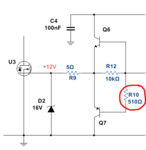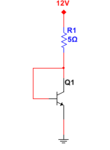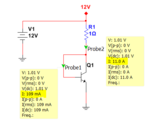mrinalmani
Advanced Member level 1
- Joined
- Oct 7, 2011
- Messages
- 463
- Helped
- 60
- Reputation
- 121
- Reaction score
- 58
- Trophy points
- 1,318
- Location
- Delhi, India
- Activity points
- 5,285
I am attaching a schematic below. The question is... do we actually require the PNP input resistor (R10) to limit the base current during MOSFET turn off?
The BJTs have a peak base limit of 1A each.
I had added R10 for safety. However since the input of both the BJTs is internally connected in a standard Totem-pole IC, it is not possible to add R10. Another question would be... is adding the base resistor a standard practice? If not, will it not result in a surge current through the base?
Please help
The BJTs have a peak base limit of 1A each.
I had added R10 for safety. However since the input of both the BJTs is internally connected in a standard Totem-pole IC, it is not possible to add R10. Another question would be... is adding the base resistor a standard practice? If not, will it not result in a surge current through the base?
Please help


